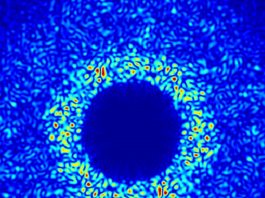A research team from Osaka University has revealed a feature that exists in antimony sulphide devices, which has the potential to create more robust renewable energy generated by solar cells.
The Osaka University (OU) research team has discovered a novel effect, where in which the voltage generated by photovoltaic devices can change based on the colour of incidence light. Scientists demonstrate how this feature is due to random states of energy that exist inside the antimony sulphide devices. It has been noted that this discovery has the potential to lead to more robust renewable energy generated by solar cells.
Additionally, when measuring the photovoltaic properties of antimony sulphide devices, it was discovered that a voltage that depends on the wavelength of the incident light, may help develop new light-sensing and imaging devices.
This study was recently published in Advanced Functional Materials.
The wavelength-dependent photovoltaic effect
Scientists from the Institute for Open and Transdisciplinary Research Initiatives at OU revealed a new feature of solar cells made from antimony sulphide composite, which they termed the ‘wavelength-dependent photovoltaic effect’ (WDPE). The team established that changing the colour of incident light from visible to ultraviolet, induced a reversible change in the output voltage, while leaving the current generated unchanged.
Photovoltaic (PV) devices, such as solar cells and photodiodes, that convert light energy into electronic power are important as renewable energy sources or as light/image sensors. Recent progress in thin-film PV devices has attracted attention, due to their low-cost process as well their flexible and lightweight properties.
Despite the various PV devices that have been recounted so far, reversible, and fast wavelength-dependent responses have not been previously observed. To distinguish between irradiation colours utilising a single photodiode, a liquid crystal filter must be employed that can electronically switch the absorption colour range. However, these filters are bulky, and being able to perform colour detection without requiring such filters would be useful for minimising the size of photovoltaic devices.
Photovoltaic devices made from antimony sulphide composite
Now, a research team from OU has built new photovoltaic devices created from antimony sulphide composite and discovered a unique effect. The voltage generated has the potential to be altered by switching the light colour, in which ultraviolet reduced the output voltage.
Thus, a reversible change in the current versus voltage curves could be obtained simply by shining different colours of light on the antimony sulphide device. “Such a dramatic shift in voltage is not observed in silicon, perovskites, or organic solar cells,” explained Ryosuke Nishikubo, first author.
To understand the mechanism behind this effect, scientists performed transient photovoltage (TPV) and photo-induced charge extraction by linearly increasing voltage. These experiments clarified the dramatic and reversible change in charge carrier lifetime, which was induced by ultraviolet irradiation.
Scientists concluded that WDPE was caused by metastable ‘trap’ states at the heterojunction interface, generated by high energy charges. These interfacial energy traps considerably diminished output voltage, and as a result, the light of certain energies could be distinguished based on the voltage.
This change could be enhanced by the presence of the vapour from a polar solvent. “While our work helps advance basic science by explaining this novel effect, the research also has many potential applications, including as a vapour detector,” concluded Akinori Saeki, senior author.
Applications of these novel devices
This antimony sulphide device phenomenon has the potential to be applied to light-sensing, and utilised in everything from mobile phones to cars, to security or horticultural systems. It can also be a part of imaging applications in medical and other scientific pursuits, such as space satellites and microphotography. Additionally, it is potentially suitable as a renewable energy source, because of its low toxicity and low production cost.









